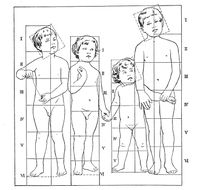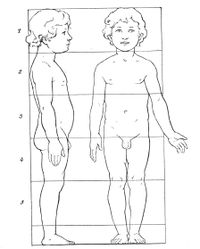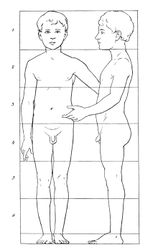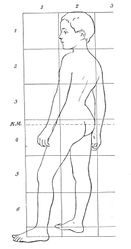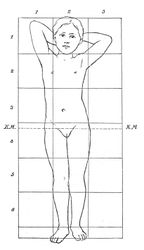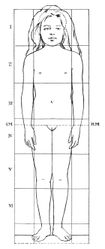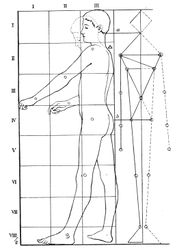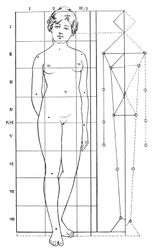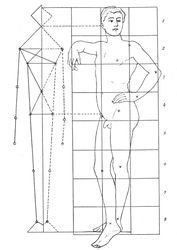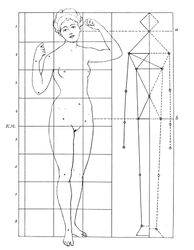Human body proportions
Knowledge and awareness of human body proportions is very important in figure drawing and sculpture. This means knowledge of the three-dimensional shapes and the relative sizes (lengths, widths, diameters, volumes, etc.) of the parts a human body is made of - the head, torso, arms, legs, etc.
Human body proportions vary strongly with age (children have different proportions from adults). To a lesser degree, they also vary individually, with ethnicity and with gender.
Whenever the body proportions of a figure are off, the figure looks weird and deformed - either frightening, ugly, or funny. This effect can be used deliberately (e.g. in cartoon or comic), whereas in realistic figure drawing it is usually undesired. In either case, an artist must know body proportions to decide whether to follow, to slightly bend, or to consciously break a rule.
Studying human body proportions
A common unit of measure when studying human body proportions is the height of the head from the chin (mouth closed) to the top of the head. For example, the overall height of an average adult is 7 to 8 "heads". Other units of measure artists may find useful are head-widths, hand-lengths, forearm-lengths, foot-lengths, etc.
Gallery
- Study of body proportions
Male nude, rear view. Study by Leonardo da Vinci.
External links
| Art techniques and tutorials |
|---|
|
Chat rooms • What links here • Copyright info • Contact information • Category:Root
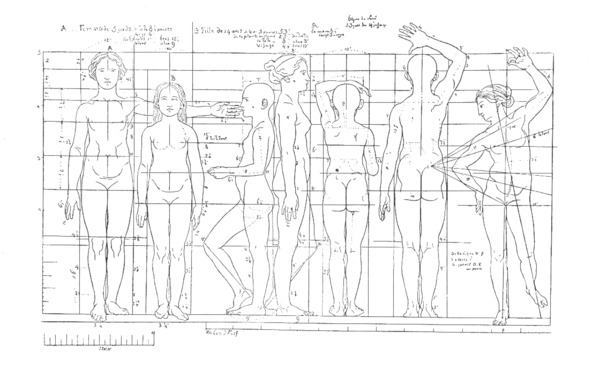
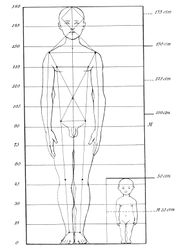
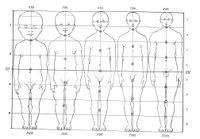
![Absolute change of body proportions: head-lengths [2, 3,] 4, 5, 6, 7, 8.](/a/images/thumb/2/23/Stratz_Korper_des_Kindes_3_095_detail.jpg/200px-Stratz_Korper_des_Kindes_3_095_detail.jpg)
